The current shunts
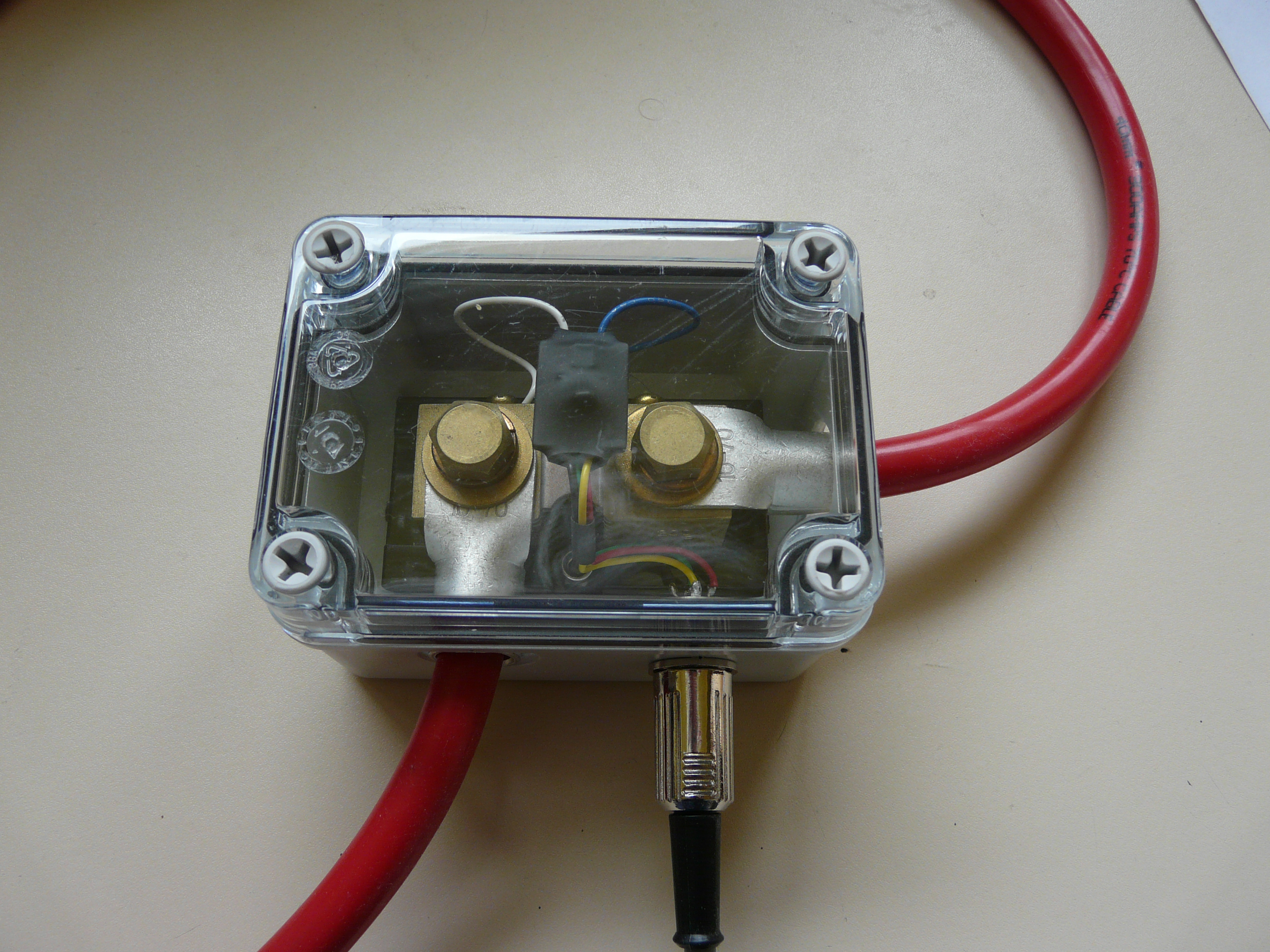
This is the 200A shunt that will measure the Alternator current. The red cables connect to the alternator and battery, while the plug goes back to the Control Unit.
All three shunts use exactly the same components, just connected in slightly different ways
The case is needed to mount the sensor chip and provide physical protection for the “live” metalwork of the shunt and cable lugs. This is the alternator shunt with the lid removed for a better view of the sensor chip, which is covered in shrink wrap insulation
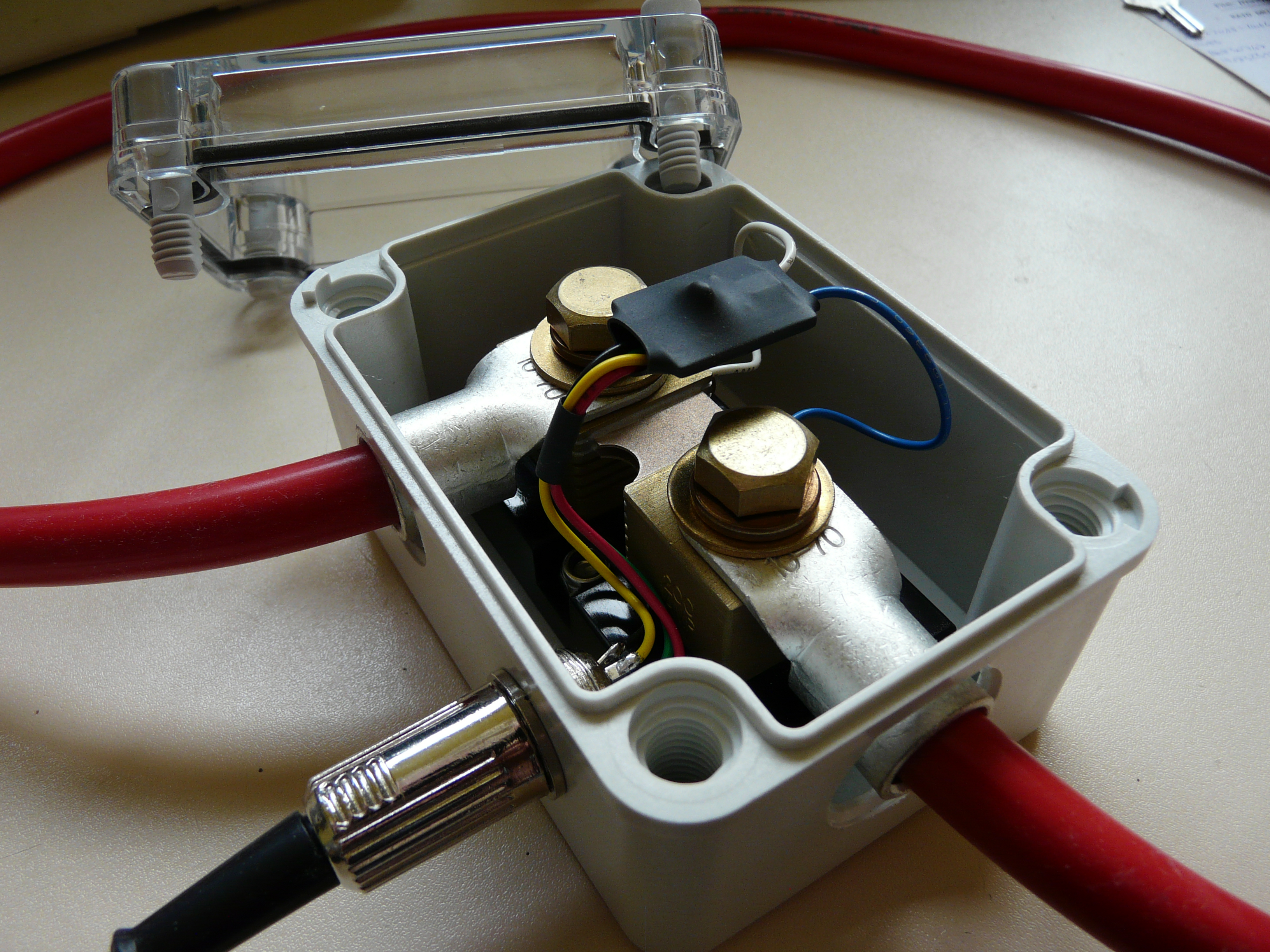
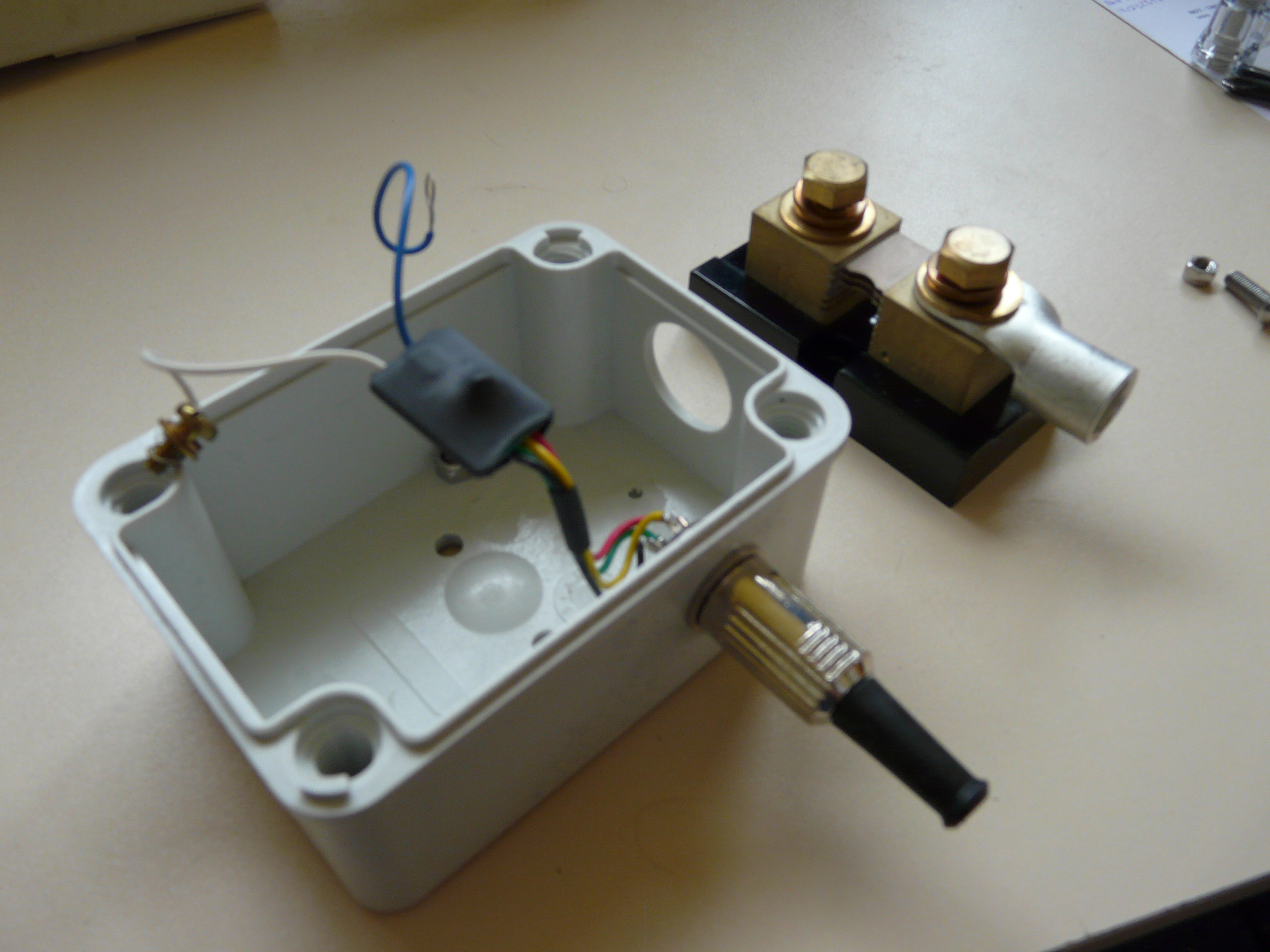
Here is the 300A Battery module with the Murata shunt removed. You can see the sensor chip, detached from the shunt, wired to the DIN socket.
Here are the sensor connections to the shunt
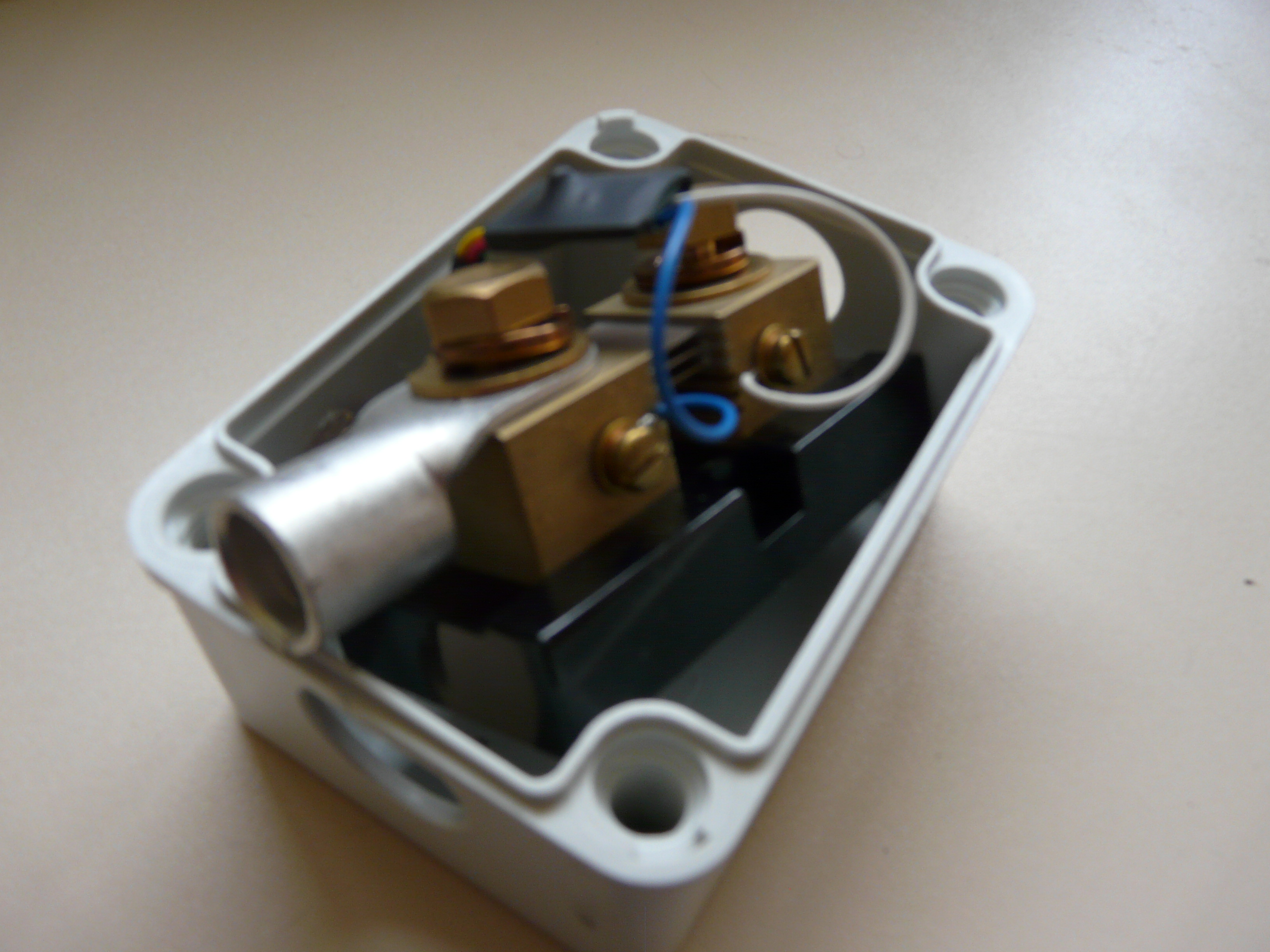
The shunts
Each of the shunts is a Murata 50mV shunt. i.e. they generate 50mV across their terminals at full load.
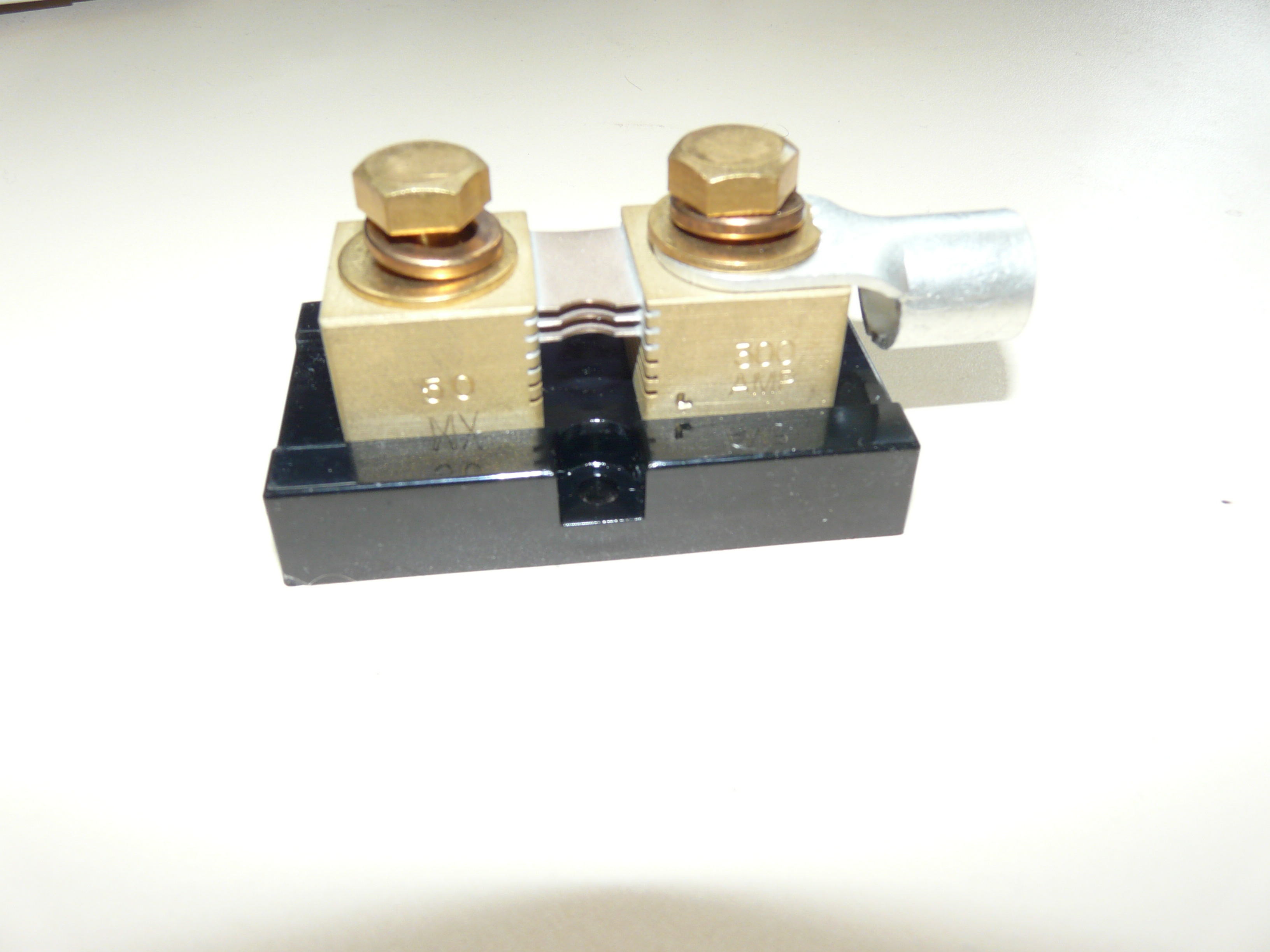
This is the 300Amp shunt that will measure the Battery current. A 300A shunt will only take the full 300A for up to 5 minutes. It will only take 200A of continuous current i.e. anything over 5 minutes.
My biggest load is the 1600VA inverter, which will take under 150A. But if I install a bigger inverter, say 3KW, which will take around 280A, the shunt will still cope.
Here shown with one of the connections removed. The lug is a standard 10-70. i.e. a 10mm hole ready to connect to 70mm² cable. 70mm² cable will carry 485Amps
On the side you can see the screws that connect the sensor wires.
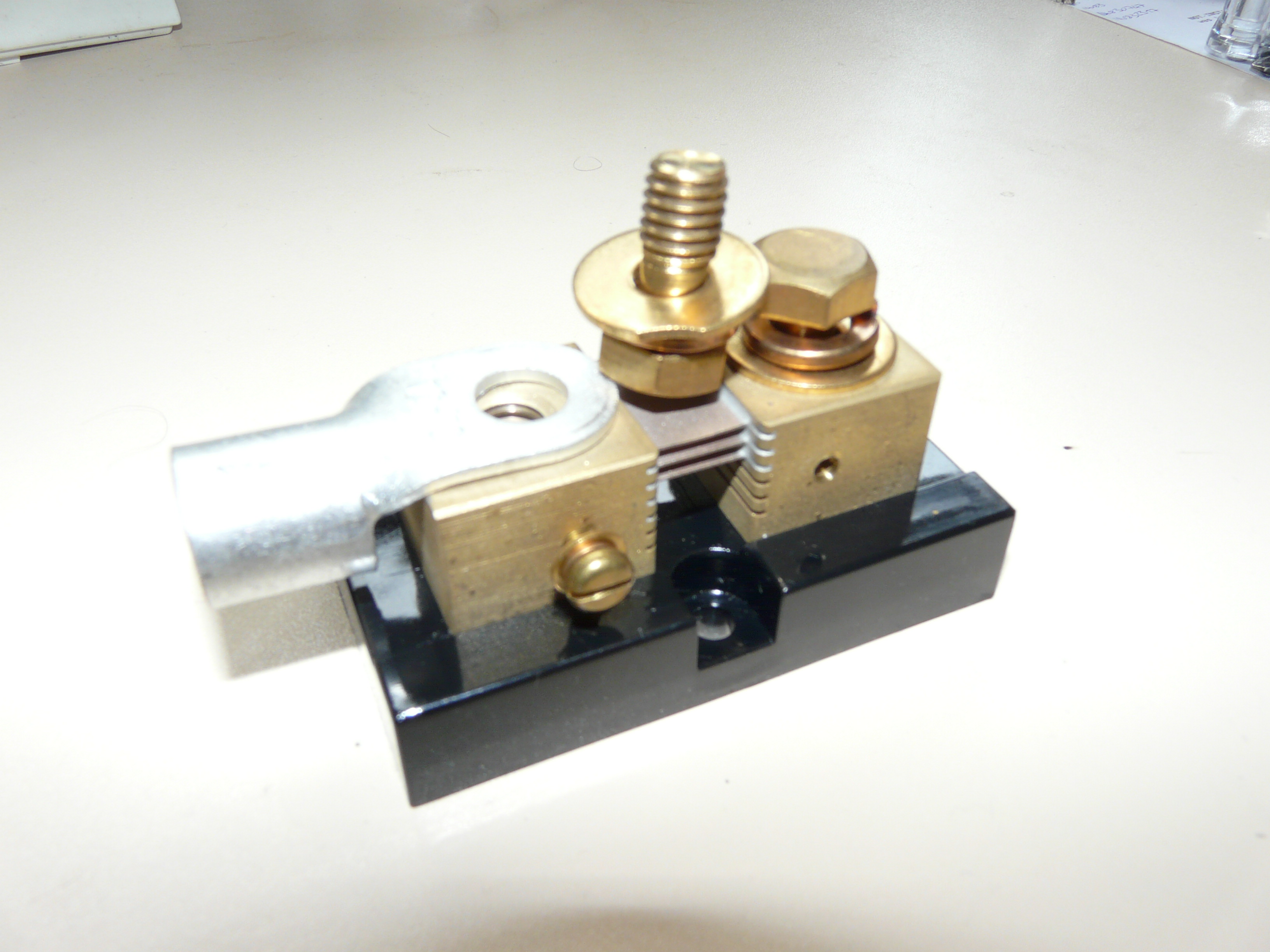
The chip
Each chip is an INA282AID Bidirectional Current shunt monitor by Texas Instruments. But the chip is tiny, so it needs mounting on a small pcb that allows wires to be connected to it.
I’ll add some pictures of the chip itself and the PCB when I assemble the 20A Solar shunt.
Swings both ways
There are only TWO differences between all the shunts.
1. The first is the size of the Murata shunt needed.
- 300A for the Battery shunt
- 200A for the Alternator shunt
- 20A for the Solar panel shunt
2. The second is the current direction. The battery shunt will need to measure current both going in (charging) and coming out (discharging to load), while the alternator and Solar panel shunts will only ever measure current leaving. This is important as the wiring on the pcb that mounts the sensor chip changes, depending on whether it is sensing one-way or two-way current. This, in turn, affects the Control Unit that needs to be told if it being connected to a one-way or two-way shunt.
parts list
- 300A shunt RS 823-3576 £25.75
- 200A shunt RS 810-3277 £26.53
- 50A shunt RS 810-3267 £20.64
- case RS 119-5519 £16.93
- DIN socket RS 490-888 £2.48
- Din plug RS 491-112 £3.06
- chip RS 817-6603 £3.20 (for 5)
- chip mount RS897-1414 £1.97
- Capacitor RS 538-1433 £0.29 (for 5)
- Total for 300A £51.33